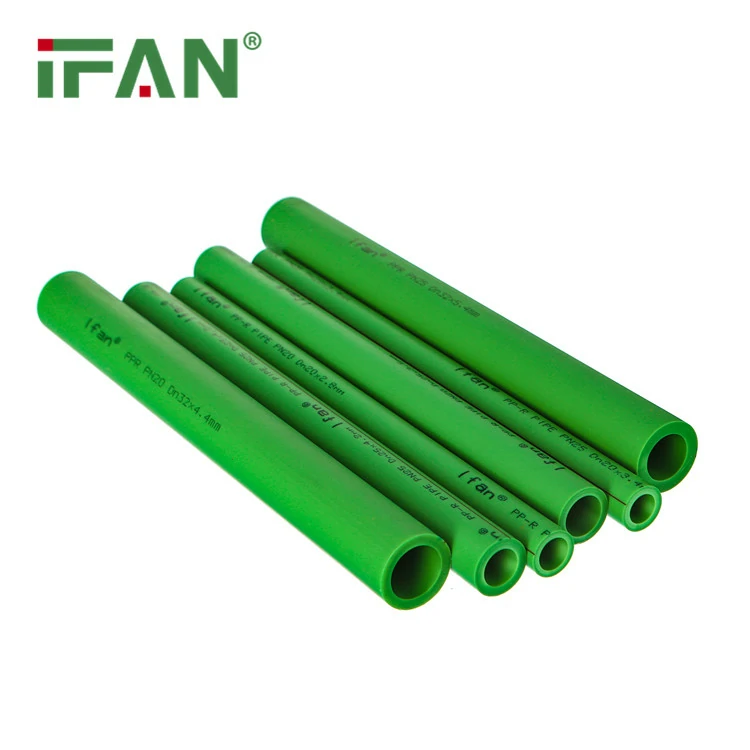Choosing the right type of piping material is a critical decision in plumbing, water supply, and infrastructure projects. Among the most widely used plastic piping options are HDPE (High-Density Polyethylene) and PPR (Polypropylene Random Copolymer) pipes. But which one is better for your application?
In this article, we compare HDPE vs. PPR pipes across several key factors—performance, durability, installation, environmental impact, and cost—to help contractors, engineers, and project managers make an informed decision.
🔍 Quick Overview: HDPE vs. PPR
| Feature | HDPE Pipe | PPR Pipe |
|---|---|---|
| Material | High-Density Polyethylene | Polypropylene Random Copolymer |
| Temperature Range | Up to 60°C (140°F) | Up to 95°C (203°F) |
| Pressure Resistance | Excellent | Excellent |
| Flexibility | Highly flexible | Rigid |
| Welding Method | Butt fusion or electrofusion | Socket fusion |
| Common Use Cases | Water, gas, sewer systems | Hot/cold water, HVAC, plumbing |
🔥 Temperature and Pressure Performance
✅ PPR Pipe: Best for High-Temperature Systems
PPR pipes can handle continuous temperatures up to 95°C and short bursts up to 110°C, making them ideal for:
- Domestic and commercial hot water systems
- Radiant floor heating
- HVAC and compressed air

✅ HDPE Pipe: Ideal for Low-Temperature Applications
HDPE has a working temperature limit of around 60°C, which makes it better suited for:
- Cold water supply
- Gas distribution
- Drainage and sewage systems
🛠️ Installation and Welding
✅ PPR Pipe
- Uses socket fusion welding
- Fast and easy for small- to medium-diameter pipes
- Leak-proof and durable connections
✅ HDPE Pipe
- Typically welded using butt fusion or electrofusion
- Better for large-diameter pipelines and long-distance applications
- Requires specialized welding equipment
🧱 Durability and Lifespan
Both HDPE and PPR pipes are:
- Resistant to corrosion, scaling, and chemical attack
- Designed for long service life (over 50 years under normal use)
However:
- PPR is better for pressurized indoor plumbing systems
- HDPE performs better in outdoor environments and buried installations due to its UV resistance and flexibility
🌱 Environmental and Health Impact
- PPR is non-toxic, BPA-free, and safe for potable water. It’s recyclable and aligned with EU and global green building standards.
- HDPE is also recyclable and used in many environmental projects like stormwater drainage and agricultural irrigation.
✅ Both materials are environmentally friendly when sourced from certified manufacturers.

💰 Cost and Availability
- HDPE pipes are generally more cost-effective for large-scale infrastructure projects.
- PPR pipes are slightly higher in unit cost but offer better value for indoor plumbing and hot water applications due to their temperature tolerance and ease of installation.
🏗️ Use Cases: When to Use HDPE or PPR?
| Application | Recommended Pipe Type |
|---|---|
| Hot water supply | ✅ PPR |
| Residential cold/hot plumbing | ✅ PPR |
| Radiant floor heating systems | ✅ PPR |
| Underground water pipelines | ✅ HDPE |
| Gas distribution | ✅ HDPE |
| Agricultural irrigation | ✅ HDPE |
| Large-diameter installations | ✅ HDPE |
🌐 Sourcing PPR and HDPE Pipes from ifanpro
At ifanpro, we are a leading pipe manufacturer from China offering:
- PPR pipes and fittings for high-performance plumbing and heating systems
- HDPE pipes for water, gas, and underground applications
- Custom services including OEM branding, private labeling, and DIN/ISO certification
Our international website ifanpro.com is designed to help global customers easily explore product specifications and get tailored solutions for their projects.
✅ Whether you’re choosing HDPE or PPR, ifanpro provides reliable, factory-direct piping systems backed by decades of experience.
✅ Conclusion
So, which is better—HDPE or PPR?
The answer depends on your specific application:
- Choose PPR for hot water, indoor plumbing, and heating systems
- Choose HDPE for outdoor piping, underground installations, or gas and irrigation systems
Both materials are durable, eco-friendly, and offer long-term performance when sourced from trusted suppliers like ifanpro.













Commentaires récents